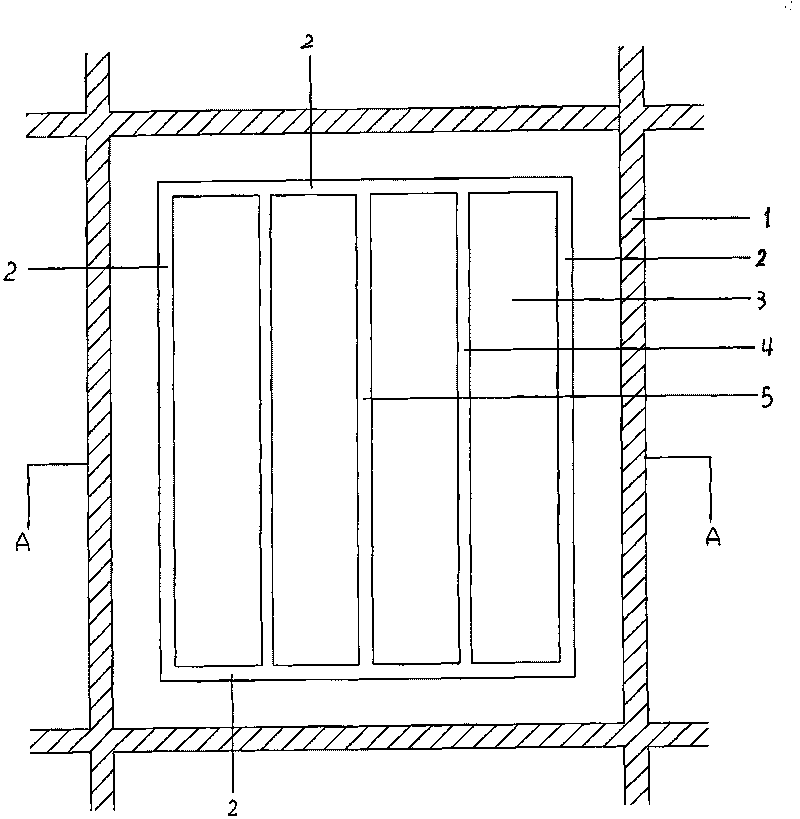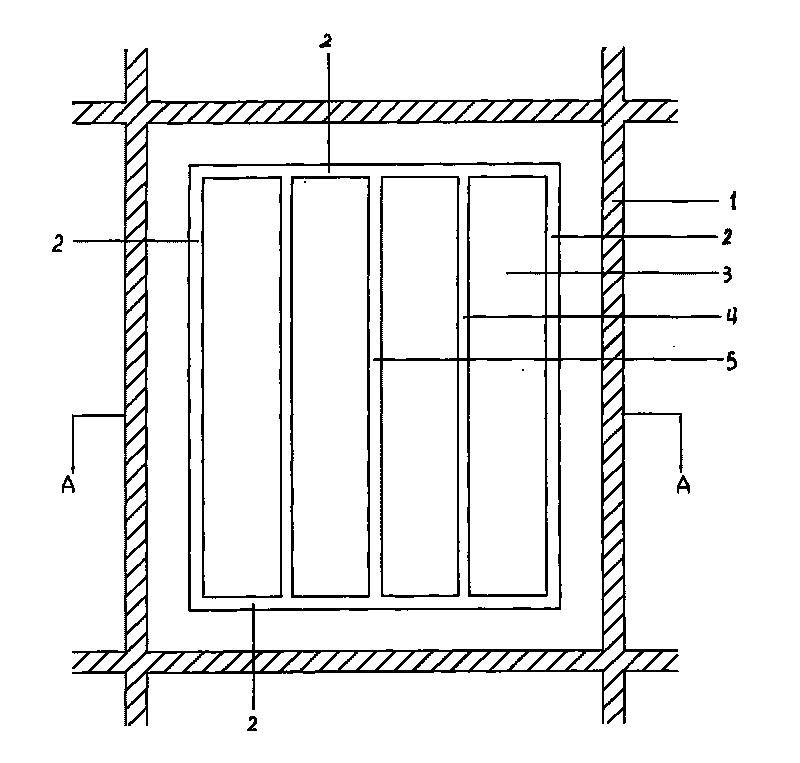Method for reducing and controlling losses of nitrogen and phosphorus of rice
A rice field, nitrogen and phosphorus technology, applied in the field of phosphorus loss and nitrogen reduction in rice fields, can solve problems such as restricting sustainable agricultural development, soil and groundwater pollution, and reduction of fertilizer utilization rate, and achieves inhibition of evaporation loss, reduction of disturbance damage, and ventilation. Enhanced effect
- Summary
- Abstract
- Description
- Claims
- Application Information
AI Technical Summary
Problems solved by technology
Method used
Image
Examples
Embodiment Construction
[0030] figure 1 figure 2 Shown in , 1, field ridge; 2, surrounding ditch; 3, box surface; 4, box ditch; 5, waist ditch.
[0031] see figure 1 ,
[0032] 1. No-tillage, standard opening. Open a 25 cm wide and 30 cm deep ditch at a distance of 80 cm from the ridge around the paddy field to see the bottom of the plow. The box ditch is 20cm wide, 15cm deep, and the box surface is 145cm wide. The soil shoveled from the ditch is evenly spread on the box surface to break up the mud and reach the level of the field.
[0033] 2. Level the van surface. Use a piece of wood with a length of 1.6m and a width of 20-30cm, on which a bag containing 15-20kg of soil is tied, and one person pulls it with a rope while walking and leveling it.
[0034] 3. Apply enough base fertilizer. Since film-mulching cultivation adopts a clear fertilization method, one-time full-layer formula fertilization in front of the leveling box, reapplying base fertilizer, applying more farmyard manure, and full...
PUM
 Login to View More
Login to View More Abstract
Description
Claims
Application Information
 Login to View More
Login to View More - R&D
- Intellectual Property
- Life Sciences
- Materials
- Tech Scout
- Unparalleled Data Quality
- Higher Quality Content
- 60% Fewer Hallucinations
Browse by: Latest US Patents, China's latest patents, Technical Efficacy Thesaurus, Application Domain, Technology Topic, Popular Technical Reports.
© 2025 PatSnap. All rights reserved.Legal|Privacy policy|Modern Slavery Act Transparency Statement|Sitemap|About US| Contact US: help@patsnap.com



